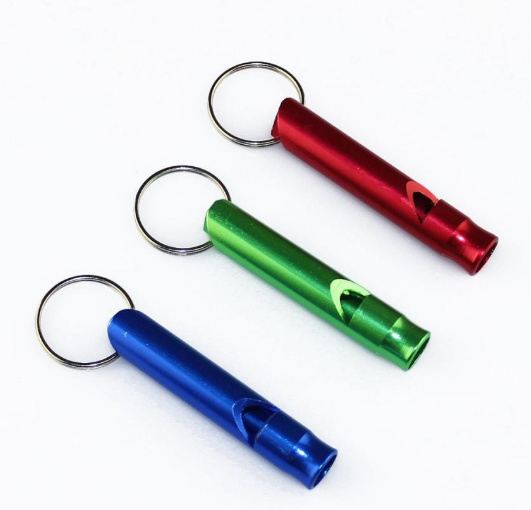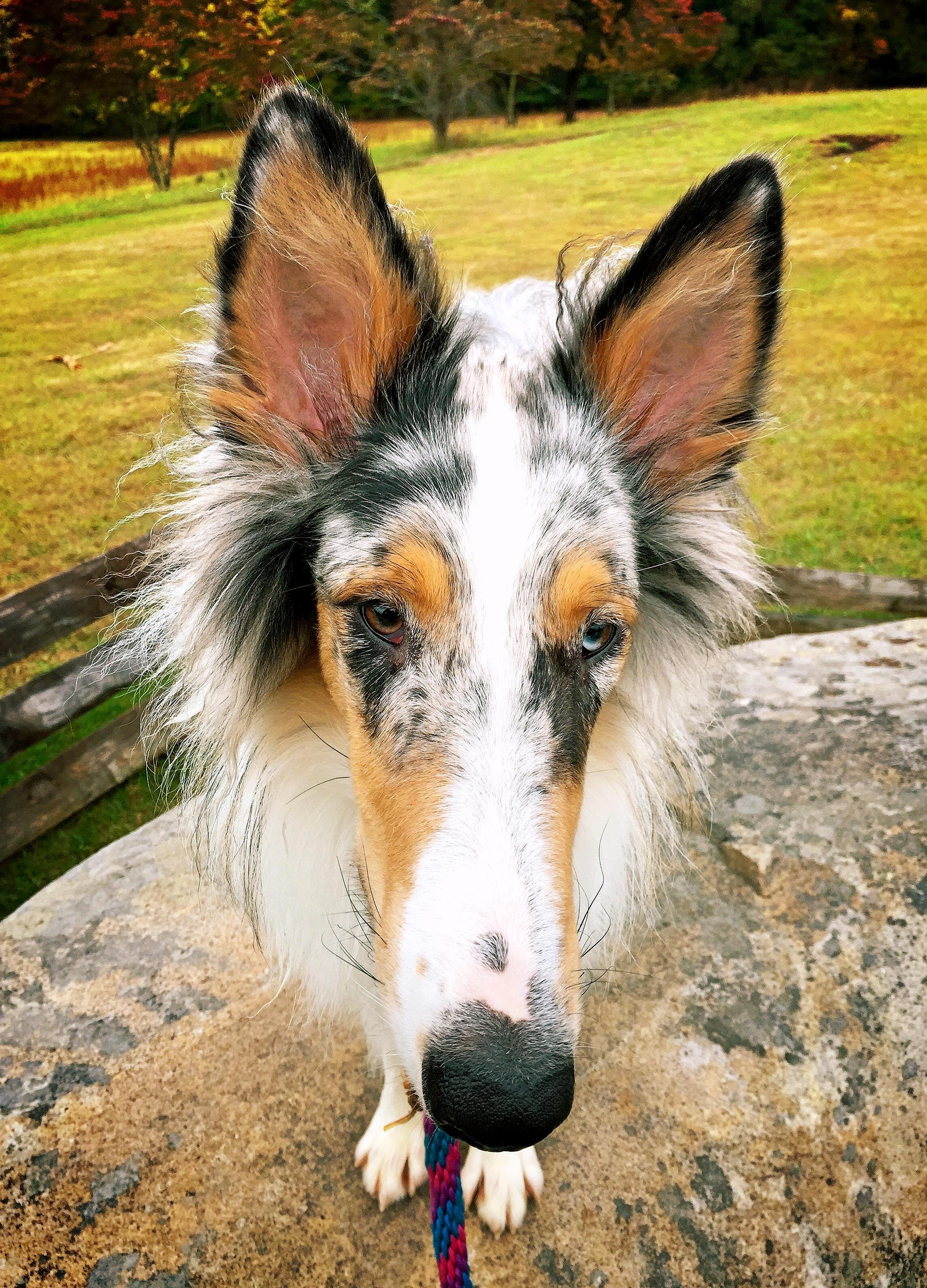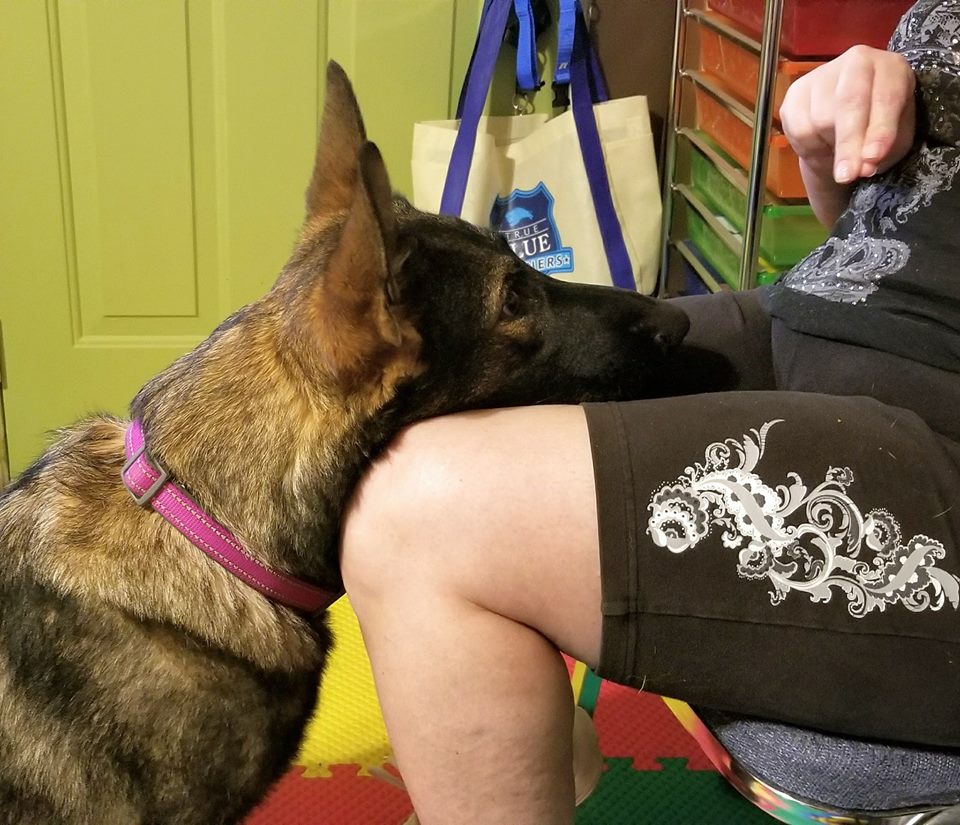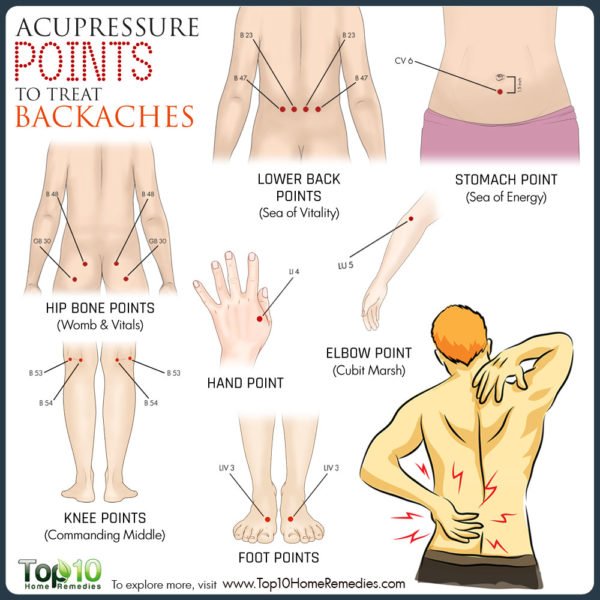I love discussing training... Especially from the science behind operant conditioning standpoint... But I think it helps to clarify what we are talking especially in terms of "+R", purely positive and balanced methods.
Just because I am a positive reinforcement trainer (+R) does not mean my dogs don't have guidelines to live by or I never tell them "No" - this does class me as not "purely positive" however. For their safety, desire for routine and basic sanity - of course there are rules.
But here is the key difference for me. My entire goal in training is to identify and reward when they are doing something right, whether that means I see them doing it and acknowledge it (Capturing) or whether it means I set them up to be successful through a training exercise that I can reward with any of the FAB 5 key reinforcers (food, toys, praise, affection or access to resources). What I don't do is wait for my dog to make a mistake to then give a correction.
If you look at the example on the chart about loose leash walking that explains it pretty well. Below are my thoughts on this... and like opinions on everything else , I am not saying I'm right I just wanted to really explain the difference for me between my style of training and what some are calling Alpha/Pack training...
Alpha/Pack Theory Training:
"My dog is pulling me on the leash when we walk and we go out of doors. This means he does not respect my authority. He wants to be in charge. That's why he tries to walk in front of me, run down the stairs in front of me, or burst out of the door.
I'm going to stop this behavior by proving that I am Top Dog/Alpha. I do this by making sure that he never walks in front of me, doesn't ever go out the door before me, I eat before him etc etc... If he does pull me or walk in front of me, I will correct his behavior by (insert training tool or correction here).
Once he respects my authority and moves to a Beta or Omega roll, he will no longer challenge me and will therefore walk on a loose leash beside of or behind me."
(I do not agree with this theory, as explained, for many reasons that I am happy to discuss... I think what people are seeing and how they're explaining it is inaccurate. I'm not saying that using these steps to correct the problem don't work, I'm saying I don't think people actually understand what's going on)
My Training Theory:
This dog is pulling me and can't focus. Instead of correcting my dog because he is pulling, I need to teach my dog where to be so that he doesn't pull in the first place.
I teach loose leash walking completely off leash in the beginning so that the leash is simply a safety strap between me and the dog. It's not a tug-of-war, it's not a battle of wills, it's not who is stronger, smarter, more dominant - it is about making sure that the dog understands what we want before we start correcting them for something that they don't necessarily understand.
More than one person has said to me: "Oh they know what they're supposed to be doing - they just choose not to do it."
And maybe that's the case. But then why would they choose not to do it?
Because there's something more interesting / distracting? Then you haven't worked enough on proofing around distractions...
Because they're being spiteful / want to rule the world? Doubtful...
So what do you do when they don't do what you ask them to do?
I always go back and evaluate my clarity in the situation.
Have I taught them in enough variables such as location, around different distractions, with different durations etc in order to be sure that they know exactly what I'm asking for when I asked for it?
You can't take a dog who just learned SIT at home, in the kitchen floor without distraction and expect that same dog to SIT the first time you ask them to outside with cars going by and squirrels running up a tree and think "But they know that!"
It doesn't work that way, dogs do not generalize in the same way that people do. In this instance, in my opinion, the fault lies on me as a trainer. I have not provided my dog with enough information to know that the behavior is expected to be the same inside the house, in one certain room with no distractions, as it is outside with a tremendous amount of environmental distraction. Being inexperienced in a certain situation and "giving attitude" is not the same thing.

You are not a dog. Your dogs know that you're not a dog. They do not see you as their "Superior" because that's comparing apples and oranges.
Can they recognize that you are the giver or the taker away of resources? Absolutely!
Is this a sign of "respect"? - That's anthropomorphizing...
Can you lead your dog without being a "pack leader"? Absolutely! Leadership comes in many forms and having a dog that looks to you when uncertain or for direction in a given situation - that's a key form of leadership.
However trying to compare dogs to wolves, especially captive wolves, is just inaccurate and then putting humans in the dog equation is the same as putting chimpanzees and humans together and saying that it's all the same thing.
It just doesn't work that way... and I think a large part of the problem is terminology.
We could be saying the exact same thing and someone uses a certain phrase to explain what they're doing and that becomes either a trigger or a clichéd catchphrase and what they're actually doing gets lost in the terminology.
I would love to open a dialogue about how you train, and how you think the dog processes that information. Let's use Loose Leash Walking as an example since this is something that many people have struggled with. Does your dog walk on a loose leash? How did you train it? How do you think your dog learned it - as in what do you think you did and how did they process that information?
Comment below - I'd love to hear your view.











































